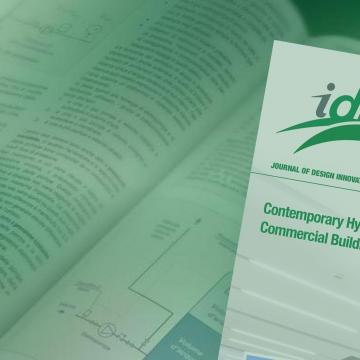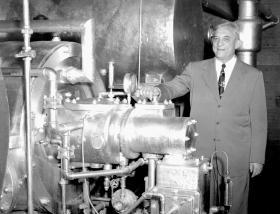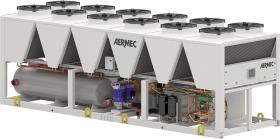HISTORY
Most people living in developed countries take building cooling for granted. Most expect it in office buildings and stores. They also expect it in cars, buses, airplanes and trains. With the exception of some far northern homes, or those at high elevations, most homeowners now expect cooling in newly constructed homes.
Attempts to limit the temperature of occupied spaces date back to early civilizations living in caves. Even in tropical climates, the temperature of soil and rock in caverns, and the ability to escape from direct sunlight, provided some relief from what most of us would now consider unbearably high temperatures and humidity levels.
Ancient Egyptians learned to improve the comfort of their interior spaces during warm and dry weather by hanging reeds in windows and trickling water down them. The water evaporating from the surface of the reeds absorbed heat from the dry desert air as it passed through. Today this is recognized as an early form of evaporative cooling.
The Romans routed water, supplied from aqueducts, through pipes in the walls of buildings to cool them. Today, cool water flowing through PEX tubing embedded in building surfaces provides radiant cooling.
The Persians fashioned “wind towers” into their structures. The buoyancy of a column of warm air on the downwind side of a nominal 50-foot-tall structure that resembled a large chimney created an upward draft. The exiting air created a downward draft on the windward side of the tower that routed air into lower levels of the building. These wind towers are still used in parts of the Middle East.
In 1758, Benjamin Franklin demonstrated that evaporation of volatile compounds, such as ether, could cause the object from which the evaporation was occurring to drop below room temperature. During one of his experiments, he managed to lower the temperature of a thermometer from 64ºF down to 7ºF. Today, the evaporation of refrigerant compounds is an essential process in millions of cooling systems.
Prior to electricity, there was little relief from oppressive summer heat and humidity. Cross ventilation through open windows provided some solace if a breeze was present but remained unable to lower oppressive humidity.
When electricity became available, motorized fans provided some relief from the discomfort associated with high air temperatures and high humidity. Increased air velocity across exposed skin encourages evaporation of perspiration, and thus increases heat dissipation from he body. However, fans alone cannot reduce interior humidity, and thus, were not a complete comfort solution.
Advances in chemistry during the 1800s laid the foundation for the first mechanical cooling devices. The first use of closed-cycle refrigeration-based cooling for industrial applications dates back to 1902, when Willis Carrier developed an ammonia-based refrigeration system for a Brooklyn printing plant.
Refrigeration-based cooling for human comfort dates back to 1924, when a centrifugal chiller also designed by Willis Carrier was installed in a Detroit department store. The luxury it provided soon lead to a market for cooling in movie theaters and other public buildings.
The continued development of refrigeration-based air conditioning played a major role in the development of the southern United States during the 1900s. Some historians consider it one of the major technical accomplishments of the 20th century.
Before widespread use of refrigeration-based cooling, most buildings equipped with central heating used steam or hot water to deliver heat from a boiler to radiators in various parts of a building. As devices for cooling were developed and electricity became increasingly available, ducted forced-air systems became the dominant method for delivering cooling comfort. The primary reason was that a forced-air delivery system could deliver heating, cooling and ventilation, whereas hydronic systems of that era could only provide heating.
However, when the objective is to deliver cooling exactly when and where it’s needed, especially in larger buildings, water remains far superior to air. The same physical properties that make water ideally suited for transporting heat through buildings also give it distinct performance advantages in removing heat from those buildings. Modern hydronics technology allows the development of water-based cooling systems that can be highly customized and highly efficient in a wide range of commercial and institutional buildings.
This issue of idronics focusses on several contemporary approaches for hydronic-based cooling in commercial and institutional buildings. These approaches leverage many modern hydronic design concepts, such as variable-speed pumping, hydraulic separation, thermal metering, heat pump technology, thermal storage, radiant panels, and waste heat recovery. This issue provides an overview of several approaches, summarizes the benefits they offer, and explains the underlying technical concepts.







